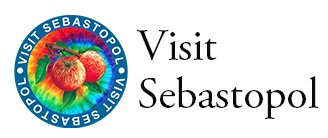Explore Sebastopol History
-

West County Museum
The West County Museum is maintained and operated by a dedicated group of volunteers of the Western Sonoma County Historical Society. In addition to designing, organizing, and displaying topical exhibits of historical interest throughout each year, volunteers also maintain an extensive archive of historical documents and physical items, assist with the recording of oral histories and historical research, and provide periodic reporting on West County’s history for local news outlets.
The Museum is located in the historic Petaluma and Santa Rosa Electric Railway Depot, one of Sebastopol’s oldest buildings. Built in 1917, the Depot was designed by Brainerd Jones, noted Petaluma-based architect. The Western Sonoma County Historical Society, in cooperation with the City of Sebastopol, undertook the restoration of the Depot in the1980s, restoring it to near replication of the period of its original construction. The restoration was completed and museum was opened to the public in 1993 . The Depot was placed on the National Register of Historical Places in 1996.
The Museum is located at 261 S Main St. across the street from Sebastopol’s Post Office. The Museum is open Saturday and Sunday, 11am-2pm. Docents are available for assistance and information about the current exhibit.
Contact the Museum at 707 829-6711 and find more information at https://www.wschs.org/museum/.
-

Luther Burbank Experiment Farm
Every town has its famous citizens, and Sebastopol’s most famous early citizen is Luther Burbank, a 19th and early 20th century plant breeder, who in his lifetime was as famous as his friends Henry Ford and Thomas Edison.
In 1885 Luther Burbank bought land in Sebastopol and for the next forty years conducted his large-scale plant experiments on these 18 acres. During his career he introduced over 800 varieties of fruits, flowers, vegetables, and grains. He developed many of California’s plums and prunes, the ancestor of the Idaho Potato, the Shasta Daisy, and novelties such as plumcots, thornless blackberry, and spineless cactus.
After his death in 1927, Burbank’s wife leased the property to Stark Brothers Nursery until 1957. In 1973 she sold the property to the Sebastopol Area Housing Corporation, which shortly thereafter began development of the Burbank Heights Housing complex. At the time of the sale of the property, the Corporation agreed that the three acres in the northwest corner of the property be preserved. This parcel included the cottage and many important plant specimens developed by Burbank at the Farm.
By the mid 1970’s the cottage had fallen into disrepair, and the property was overrun with poison oak and blackberries. The Western Sonoma County Historical Society was formed to restore and preserve the Farm. In 1975, as its first order of business, applications were filed to place the Farm and Burbank’s cottage on the National Register of Historic Places. The property was placed on the register in 1978, and the Society has continued since that time to work at restoring the Farm.
In 1995 title to the three acres was released to the City of Sebastopol who, in turn, leased the Farm to the Western Sonoma County Historical Society.
VISITING LUTHER BURBANK’S EXPERIMENT FARM
As a City Park, maintained by volunteers of the Western Sonoma County Historical Society, the Farm is open from dawn until dusk every day of the year. Volunteer day is Wednesday 9-Noon. Our address is: 7781 Bodega Avenue, Sebastopol, CA 95472. (Please enter at 7777 Bodega Avenue, Burbank Heights and Orchards Senior Housing). Docent tours can be arranged by calling 707 829- 2361 and more information is at wschs.org/farm.
